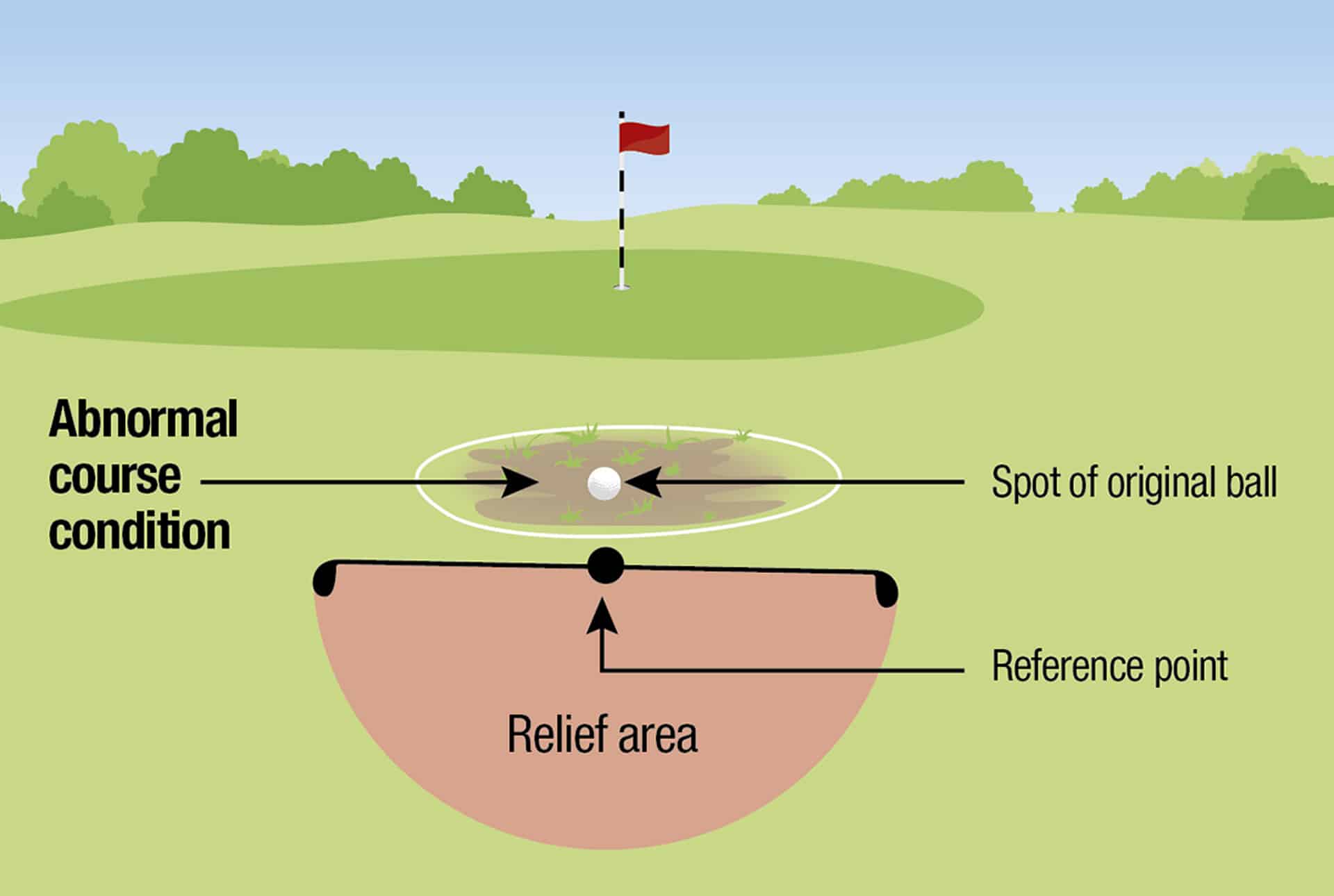In the last edition, we started looking at the various relief options offered to a player as he/she is busy playing a round of golf
A player’s ball often ends up off the fairway and could lie in or on obstacles, a bunker or even inside a penalty area – the question now is how can the player proceed correctly under the Rules and what options are available?
We have noted that there are FREE relief situations and situations, e.g. in dropping out of a penalty area, where a PENALTY of one shot is applicable. Let me confirm again: the most important aspect in applying a rule, is to establish on which part of the course the ball lies! That fact will determine which rule(s) are applicable – if in bunker, the bunker rules apply, etc.
The relief situations, free and penalty, are covered by Rules 15 – 19 and last time we looked at Rule 15 where the removal of Loose Impediments and Movable Obstructions were discussed. Remember, you may remove all of it anywhere on or off the course if it interferes with your ball or swing or stance or even only distract you, but if your ball moves in the process, you must replace the ball on the original spot.
There is one difference, if the ball moved because you removed a Loose Impediment, you get a 1 shot penalty, where, if it moved because you removed a Movable Obstruction, there is no penalty. (In both cases, if you do not replace the ball, you will get a 2-shot penalty for playing from the wrong place!)
moving on to rule 16
In this article we move on to Rule 16 – a much liked rule by golfers all over the world as it gives the player FREE relief from various situations, described under the umbrella-name as Abnormal Course Conditions, on the course.
There is a clue in the name – these are conditions which are not normally found on a course and therefore these conditions are not treated as part of the challenge in playing the particular course. A player can thus take free relief (except if ball is in penalty area) by picking up the ball, dropping it in a relief area based on the Nearest point of Complete Relief, and playing it then from this different place.
Rule 16 gives free relief from a variety of conditions, namely Abnormal Course Conditions (which comprises 4 defined situations), a Dangerous Animal Condition (e.g. a snake or bee nest near your ball!) and an Embedded Ball. There are many instances where relief can be taken and I have also found many misconceptions about the application of this rule (and even heated arguments about what is a mole-hill, etc) – we will thus discuss the various relief situations over the next few articles so that we can untangle all aspects and hopefully, with examples, get a clear understanding of all this relief available to players.

We need to understand the application of this relief – therefore we need to go to the Definitions where it is explained.
Abnormal Course Conditions can be any of the following:
– Animal Hole
– Ground Under Repair
– Immovable Obstruction
– Temporary Water
Let’s look at Animal Holes in this article, and then we will discuss the other areas in the next few editions.
WHAT IS AN ANIMAL HOLE?
The old rules used to refer to the term “burrowing animals”, but this concept has been replaced in the new rules by the broad term “animal” which is described as “any living member of the animal kingdom”. However, when describing an Animal Hole, it confirms it is any hole made by an animal (the whole kingdom), except a hole dug by animals which are defined as loose impediments, namely worms or insects. The “hole” also includes the loose material the animal dug out of the hole (e.g. sand, stones), any worn-track of the animal leading into the hole and any area on the ground pushed up as a result of animal digging underground (e.g. mole-hill or -run).
The result of the broadening of these definitions is that we now get relief from all animal holes. This include holes made by a dog, and yes, the guinea-fowl (bird is an animal) scratchings as well (holes made by an animal!).
The biggest uncertainty when it gets to animal holes especially in the Cape area, usually is about mole-hills and mole-runs. When does it stop to be a mole-hill (no relief)? Is it still a mole-hill/hole if a tractor has run over it or it has been flattened by a mower? In answering this question, I will share with you how we as referees approach this during tournaments and what process we have agreed with the players.
LET ME CONFIRM
There is no age limit to a mole-hill. The rules say you get relief from a mole-hill/hole and all we need to do is to make certain it is a hole made by a mole, even if it an old hole.
The hole can be flattened or have been mowed over – if we can still identify it as an animal hole, the player may take relief.
How do we distinguish between a genuine (old) hole and just a bad patch of flattened sand in the rough? We will, take a pen/pencil and stick it in the ground – if it glides in (without any real pressure) it is an animal hole and free relief will be available. If the pen will not go in, it is merely a patch of sand. (You can try this at your course to check – this method stops any arguments and let players get on with the game!)
WHEN CAN YOU TAKE RELIEF?
You can take relief if the animal hole interferes with either your stance, your swing (going back and forward) or if the ball lies in or on an animal hole. You do not get relief if it only a distraction or if it in your line of play without physically interfering with your stance or swing!
(On the putting green only, you do get relief for the line of putt and some hole or other abnormal course condition is in your way.)
Please note that this relief is optional, you do not have to take it. Sometimes you may take relief and the relief area can take you behind a tree – you may thus be better off by playing the ball where it lies. That is why we always tell a player not to pick up the ball before you have established where you will be dropping and you are happy with the outcome.
HAPPY GOLFING, FROM INUS MARAIS
He is a level-3 qualified referee and has officiated also at many professional events on the Sunshine Tour including the SA Open, Dunhill Challenge at Leopard Creek and also various Ladies’ tournaments, including many SA Ladies’ Opens and the Czech Ladies Open at Prague in 2019.
He is a passionate golfer and is always willing to talk about the Rules of Golf and share incidents that happened in tournaments.
INUS MARAIS | 082 440 2576 | [email protected]





